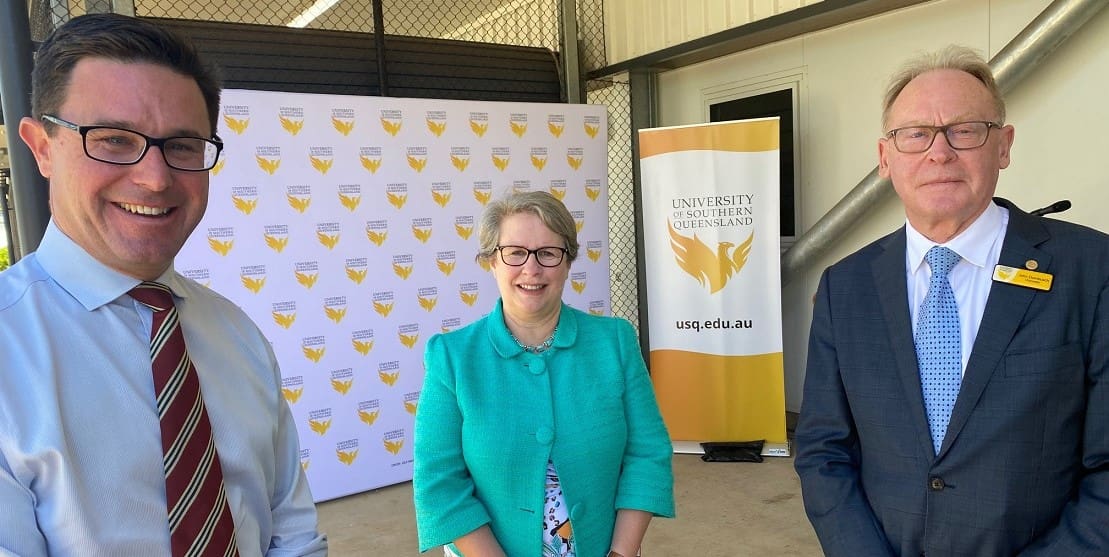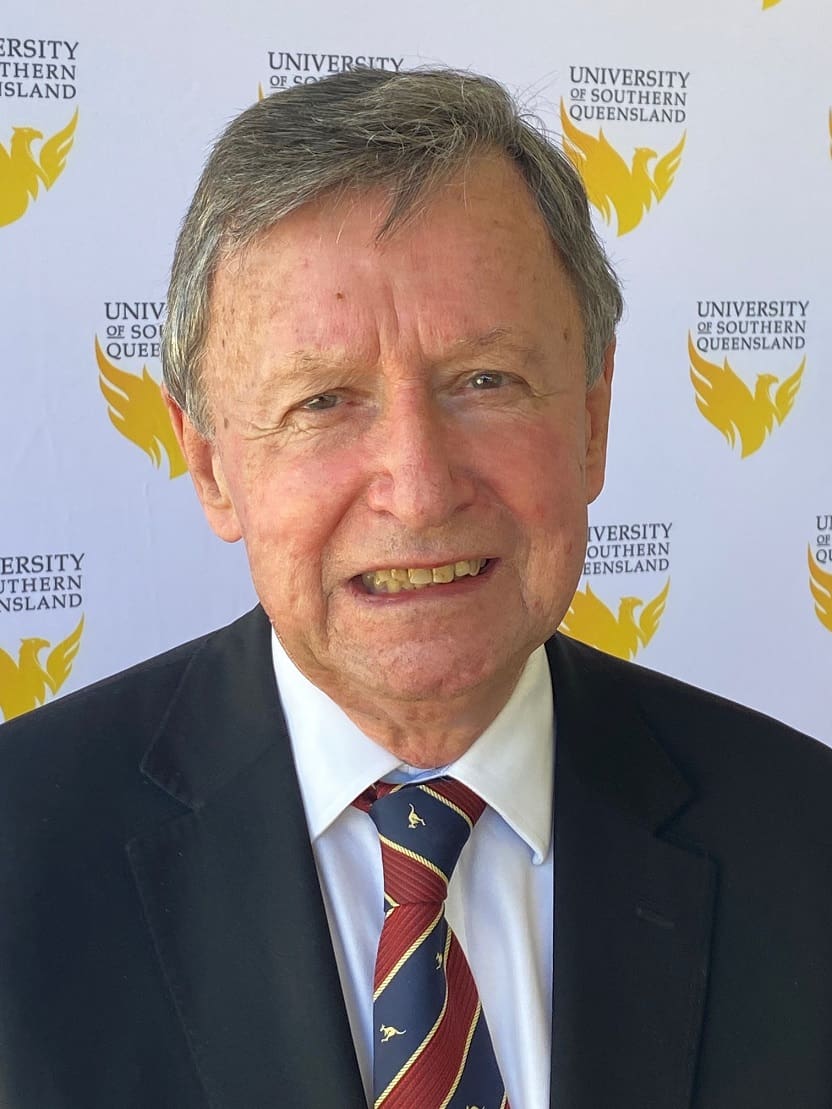
Minister for Agriculture, Drought and Emergency Management, David Littleproud, USQ vice chancellor Professor Geraldine Mackenzie and USQ chancellor John Dornbusch at the launch of the inaugural Drought Resilience Adoption and Innovation hub.
THE University of Southern Queensland (USQ) has become the first of eight Drought Resilience Adoption and Innovation hubs to be tasked with helping farmers and regional communities better prepare for future droughts.
Launching the inaugural hub in Toowoomba today, Minister for Agriculture, Drought and Emergency Management, David Littleproud, said the hubs throughout regional Australia would focus on building drought resilience.
Minister Littleproud said the Australian Government was investing $8 million in the USQ hub, with an additional $11 million to be contributed by hub members.
“We are entrusting the University of Southern Queensland with $8 million as part of our investment of a total of $86 million under the Future Drought Fund,” he said.
“This hub will support nodes from Longreach, Roma, Stanthorpe, Narrabri and Lismore.
“There will be extension people on the ground working with farmers, understanding their needs and driving the research back to our best and brightest.
“It is giving our farmers the tools and capacity to address the changing climate and be able to continue to produce the best food and fibre in the world.”
Mr Littleproud said it was the result of a long journey that started in 2018 to reform the innovation, research and development sector.
“This is about bringing in the 15 commodity-based research and development corporations to make sure we now have a reform place where we get back to first principles – which are value to the levy payer and value to the taxpayer,” he said.
“Over $1.1 billion a year goes into research and development, but there is a plethora of duplication, there is not enough commercialisation of that work and no coordination of that work.
“What this hub will also be is the first of eight physical platforms where corporates and foreign states will know exactly what we are doing and will be able to come and see it, feel it and touch it.”
Push to lift world ranking
Mr Littleproud said establishment of the hub was part of an effort to achieve greater value for money for levy payers and tax payers, and lift Australia’s ranking in global research and development.
“We are ranked number 23 in the world for research, development and technology in agriculture. We have the same number of researchers as the United States and Netherlands who are number four and six in the world,” he said.
“It is embarrassing that Australia is not number one in the world. I have tasked our research and development corporations to change that to number one by 2030.”
Complementing the new physical hub, Mr Littleproud said that on Monday he would also be launching a digital platform “so everyone around the world can see what we are doing here in Australia”.
“The digital platform will allow the world to see exactly what each of our research and development corporations across the 15 commodities are doing and be able to invest,” he said.
Making a difference
USQ vice chancellor Professor Geraldine Mackenzie said the project would make an enormous difference to agricultural producers and regional communities.

Roger Stone
“At the University of Southern Queensland we have known, global leadership in drought and resilience research through Roger Stone who has been hub director and has pulled all this together,” she said.
“We are very well known for our work in climate risk, drought and regional resilience. This couldn’t be a better match for the work that we are doing.”
USQ deputy vice chancellor Professor John Bell said despite its recurring nature, drought often resulted in devastating economic and social impacts.
“By connecting research expertise with existing on-the-ground knowledge we’ll help empower primary producers to be more profitable and adaptable, as well as reduce community vulnerability,” he said.
……………………………………………………………………………………………………………………………………………………………….
Fresh funds flow for drought scheme
NSW Farmers has welcomed the allocation of new funding to the Emergency Water Infrastructure Rebate (EWIR) scheme, a popular drought management and preparedness measure for farmers.
The NSW Government has allocated $15 million in funding to the scheme, which means a total of $30 million will be available after the federal government’s dollar-for-dollar contribution.
NSW Farmers president James Jackson said the announcement was a win for the state’s primary producers, who still faced the lasting impacts of drought and who wanted to build the future resilience of their farms.
“The scheme enables farmers to install infrastructure on their farms to make them more resilient to prolonged dry conditions, and this injection is set to provide $5 million worth of bores, pipes and dams on farms across NSW,” Mr Jackson said.
Mr Jackson said it was also promising to hear the NSW Government would work with the Commonwealth to ensure an additional 845 applications made last year could be processed as soon as possible.
“One of our main concerns last year was that existing applications were not being processed, creating uncertainty for those with funds pending,” he said.
The EWIR scheme will be administered by the NSW Rural Assistance Authority and will provide eligible primary producers access to up to a 25 per cent rebate, up to $25,000, on new purchases and installation costs of new water infrastructure.
Grain Central: Get our free cropping news straight to your inbox – Click here

HAVE YOUR SAY